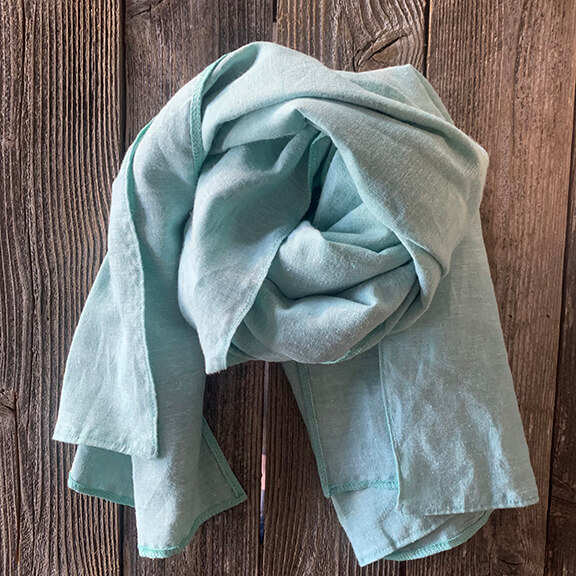Hemp, Sustainability
The Process, Products, and Benefits of Hemp Fibers
A Hemp Overview in Context
The hemp industry has long been misunderstood based on the association with its illegal counter-culture cousin, Marijuana. But as the legalization of marijuana has broadened in states across the nation and the counterculture is slowly shifting mainstream, hemp has become recognized for what it is not, and more importantly, what it is.
While the marijuana plant is used for several medicinal and recreational purposes, hemp components are used for everything from health food, cosmetics, and rope to printer ink, soaps, detergent, and lighting oil. Hemp fibers can be used for textiles to produce clothing, bags, blankets, and more with benefits in the uses but also advantages for our environment.
The oldest relic of human industry is a scrap of hemp fabric dating back to approximately 8,000 BC. — John A. Garraty, The Columbia History of the World
The hemp plant is rich in renewable resources for producing raw materials and products of all kinds. Every part of the plant can be used and even the waste that results from processing can be used for animal feed. Let’s look at the hemp seed and its corresponding byproducts:
- Hempseed Nut: bread, cereal, dairy products, and protein powder
- Hempseed Oil: fuel, ink, paint, body products and cosmetics
- Hempseed Cake: animal food and flour
The hemp stalk is just as rich offering attributes that can produce even more:
- Hemp Hurd: animal bedding, mulch, fiberboard, concrete, and insulation
- Hemp Stalk: Biofuel, paper products filters
- Hemp Bast Fiber: Cord, netting, canvas, carpet, clothes, shoes, bags
With that much production from one plant, it is no wonder that the hemp industry is currently valued at figures in the billions and growing.
The global industrial hemp market size was valued at USD 3.61 billion in 2020 and is expected to expand at a compound annual growth rate (CAGR) of 16.2% from 2021 to 2028. — Grand View Research
Most notably, it is the hemp fiber that is our focus today so, let’s have a look at the process, the outcome, and the advantages.
How are Hemp Textiles Produced?
Producing textile from hemp seems like a simple process but it takes time and focus the moment the seeds are sewn. The Hemp Foundation outlines the 6 step process as follows:
- Planting and Cultivating: When cultivating the plant for fiber use, the seeds are sown close together—15-30 plants per square foot. Denser planting results in taller plants with virtually no branches, which increases the fiber yield. Dense planting takes care of weeds and hemp is naturally pest resistant. Harvesting of hemp plants for fibers happens when the lower leaves of the female plants begin to become yellow.
- Cutting and Retting: The hemp harvester is designed specifically for cutting and baling hemp stalks. Once cut and bailed, they left in the field for about five weeks to allow for the fibers to separate, a process known as retting. Once the make stalks are thoroughly dry they are ready for the next stage of the process.
- Breaking Down: Breaking is the process of separating the dried hemp fibers from the wooden core of the stems. It is done with a machine called the decorticator, and through the process peels the surface layer out and separates plant fiber.
- Scutching: The final step in the separating process and entails beating the stems to separate the last of the woody cores from the fibers and eliminate any unwanted materials.
- Hackling: Further removing impurities. Hackling separates the line fibers from the tow fibers. This process is necessary to ensure line fibers are straight and clean line. While the line fibers are used for spinning, the tow fibers are baled for use in coarse yarn, pulp, and staffing.
- Spinning: Once the fibers are clean, straight, and cut to size, they are ready for spinning. The wet spinning process produces finer yarns for a variety of clothing similar to linen. Dry spinning utilizes the tow fibers and leftover line fibers for producing coarse yarns for carpets, bags, shoes, and more.
While the process is precise and time-consuming and the machinery used is specific to the hemp plant, technologies are advancing toward a more efficient approach.
Dan Van Puyvelde is co-owner and technical innovation manager for Cretes (Creative Technical Solutions). The company makes fiber processing machines and flax harvesting technology which are being used to process hemp. Puyvelde points out that there are two categories of hemp processing—the cotton way and the flax way.
The tooling and machinery used for cotton can be used for hemp in the same ways, as long as they follow specifics for harvesting, baling, and refining. Additionally, he suggests that the flax textile way of processing used to produce linen can be used for hemp throughout the chain of production as long as the hemp is harvested accurately. The team at Cretes has developed innovative machinery to accommodate the hemp specifications and address efficiencies in harvesting for fiber as well as CBD.It’s a new way of producing that will result in larger capacity and a quicker time to market.
Hemp has everything to become by far the most environmentally friendly fiber in the world. — Dan Van Puyvelde is co-owner and technical innovation manager for Cretes
The long and short of it is that if flax machinery had not already existed for linen production, the challenges for hemp fiber processing would remain tedious and inefficient. With the help of Puyvelde and his team’s innovations, hemp production for textiles will continue to evolve as a growing global business.
Benefits of Hemp Fiber Textiles
Hemp fiber is similar to linen but stronger, and while hemp textile is difficult to bleach, the fibers are more absorbent than cotton and can be dyed brighter and darker colors. Coupled with that and the ability to block ultra-violet rays, hemp will not fade as fast as cotton.
In an article written for TextileToday.com, Dr. N.N Mahapatra has stated that hemp has the best ratio of the heat capacity of all fibers giving it superior insulation properties. He goes on to say that as a fabric, hemp provides all the warmth and softness of other natural textiles and will keep your warmer in the winter and cooler in the summer. Additionally, organic Hemp fiber “breathes” and is biodegradable. Lastly, because of the durability and resistance to water rot hemp is commonly used for ropes and cordage for the shipping industry.
The Benefits of Hemp Fiber beyond Sustainable Clothing?
Currently, the majority of textiles consumed globally are made of cotton and synthetics. That is bad news for the environment as the cotton crop alone is responsible for 50% of pesticides consumption on a global scale. Cotton crops require artificial pesticides, herbicides, and fertilizer, all harmful to people and the environment. Hemp, on the other hand, is a completely renewable resource that grows quickly with little need for pesticides. It grows from seed in a range of soils with a deep root system that aids in preventing soil erosion while removing toxins and aerates the soil naturally to benefit future crops.
Hemp fiber is a step forward in addressing the climate crisis in tangible ways. Fabric weaver and co-author of the book Fibershed, Rebecca Burgess developed a project committed to wearing clothing made from fiber grown, woven, and sewn within her local region of North Central California. Through her collaboration with ranchers, farmers, and artisans, she discovered that it was entirely possible to support a textile economy as a way to prevent climate change and enhance soil carbon. Hemp fiber production is a step forward in addressing the climate crisis in tangible ways through renewable farming and efficient production for sustainable textiles.
Burgess’s project is proof that a hemp fiber textile future is here, better for us and better for our planet.
For more on a commitment to a better future through hemp fiber-based clothing, check out the “Farm to Closet” vision from Rebecca Burgess and Courtney White. Their book, Fibershed can be found at Kaya Hemp Co. along with these other hemp fiber products.
Come see us at the store in Phoenix or visit us online at Kaya Hemp Co.
Resources:

